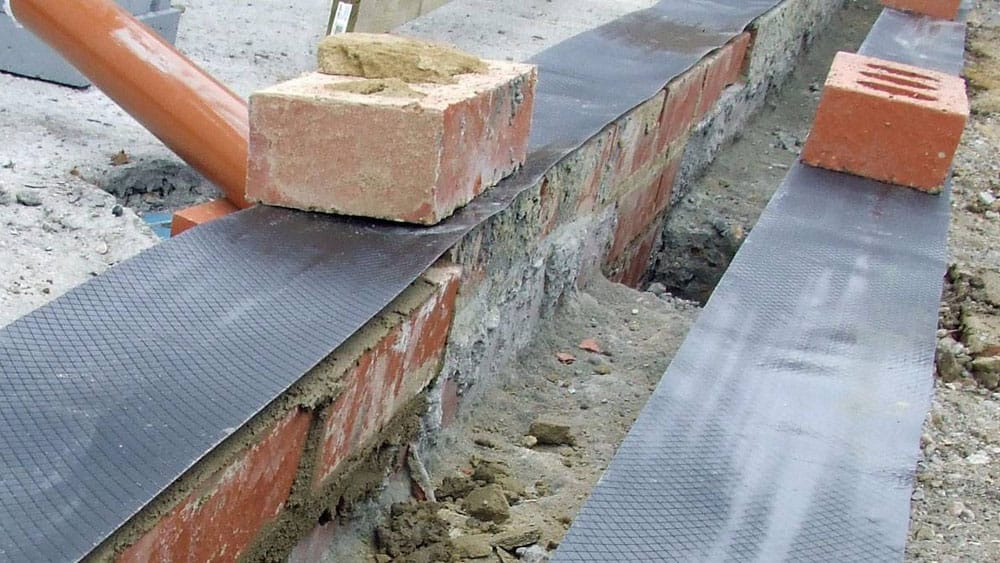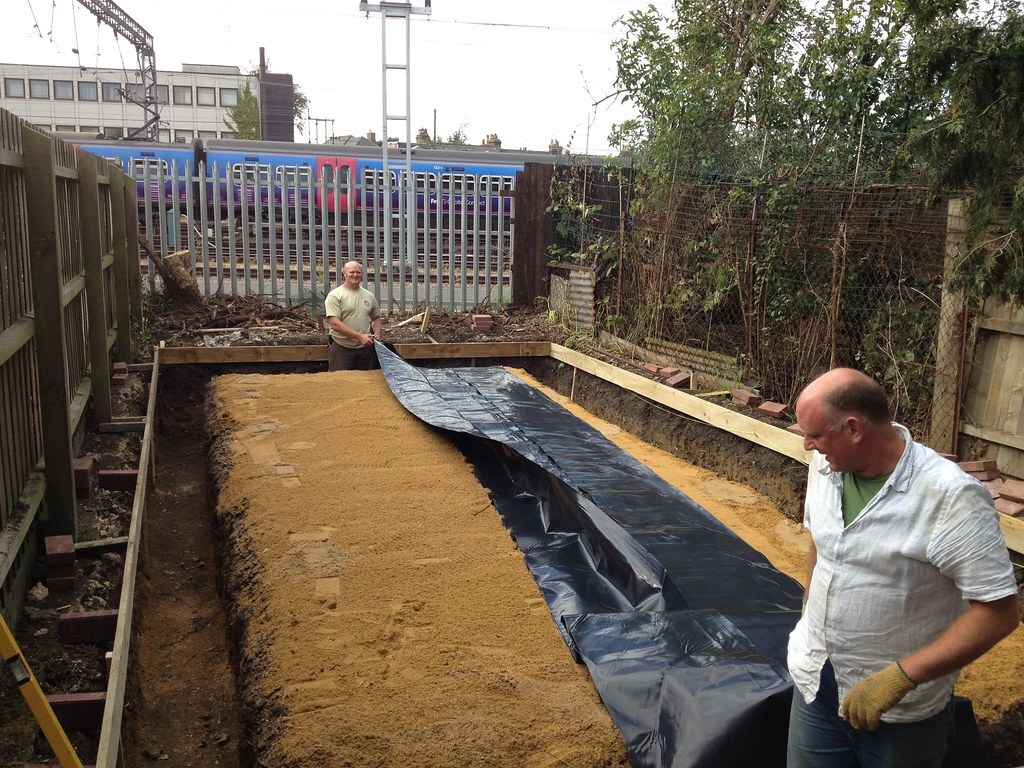Exploring the Numerous Techniques and Solutions for Effective Damp Proofing
Wetness in buildings postures substantial obstacles to both architectural honesty and indoor air top quality. Numerous methods and options have arised to fight this pervasive problem. From typical damp-proof membrane layers to ingenious chemical therapies, each approach provides unique advantages. Comprehending these choices is important for effective dampness control. Nevertheless, choosing the ideal remedy depends on certain structure conditions and requirements, triggering additional expedition right into one of the most reliable moist proofing approaches offered.
Understanding the Root Causes Of Moisture
Although wetness can arise from various resources, understanding these reasons is important for reliable remediation. Commonly, moisture stems from 3 main sources: climbing damp, passing through moist, and condensation. Increasing wet takes place when groundwater travels upwards through permeable products, such as block or stone, usually as a result of an absence of an efficient obstacle (damp specialist newcastle). Penetrating moist is commonly triggered by exterior elements, including roof leakages, defective seamless gutters, or damaged wall surfaces, permitting water to penetrate a property. Condensation, on the various other hand, results from excess moisture airborne, typically exacerbated by inadequate air flow and temperature level differences, leading to water beads basing on surfaces. Recognizing these underlying issues is essential, as each sort of moisture calls for a tailored strategy for removal. Proper analysis helps in establishing the most reliable remedies, ultimately protecting the structural integrity of a structure and boosting interior air quality
Typical Damp-Proof Membrane Layers

Chemical Damp-Proofing Solutions
Chemical damp-proofing services use a cutting-edge approach to avoid wetness breach in structures. These approaches normally include the application of fluid chemicals that penetrate masonry and develop an obstacle versus increasing damp. Generally made use of chemicals include silanes, siloxanes, and other water-repellent agents that respond with surface area materials to produce a hydrophobic layer.The application procedure generally calls for boring holes right into the walls, injecting the chemical remedy, and permitting it to cure. This approach is particularly beneficial for older structures where traditional damp-proof membranes might be unwise. Chemical damp-proofing can be less turbulent and a lot more cost-efficient than comprehensive remodelling projects.While reliable, these services depend on appropriate application and ecological problems for peak performance. damp removal newcastle. Normal upkeep and monitoring are important to guarantee the longevity of the damp-proofing treatment. In general, chemical damp-proofing stands for a functional alternative for securing buildings versus moisture-related damage
Tooth Cavity Wall Surface Building Techniques
Cavity wall building methods offer countless advantages, particularly in moisture control and power effectiveness. By incorporating an air gap between 2 layers of stonework, these walls properly mitigate water ingress while enhancing insulation. This combination not only shields frameworks from dampness however also adds to lowered energy consumption.
Advantages of Tooth Cavity Wall Surfaces
When thinking about effective damp proofing approaches, the advantages of tooth cavity wall surfaces stand apart prominently. Dental caries wall surfaces include 2 different layers, producing an air gap that successfully reduces dampness penetration. This design lessens the danger of dampness, as the external wall surface serves as a barrier against rain and water ingress. Furthermore, dental caries walls enhance thermal insulation, which adds to energy performance by minimizing heat loss. They additionally supply sound insulation, helping to create a quieter interior setting. Furthermore, the air gap enables for ventilation, which helps in moisture control and decreases the probability of mold and mildew growth. These benefits not only improve the overall convenience of a structure yet additionally add to its long life and architectural integrity.
Wetness Control Techniques
Efficient dampness control strategies are critical in dental caries wall surface construction to assure long-lasting protection versus moisture. One main method includes the unification of weep openings, which facilitate water drainage from the cavity, stopping buildup. Additionally, making use of breathable membrane layers can help handle dampness degrees while permitting trapped vapor to leave. Appropriate positioning of insulation is additionally crucial, as it must not block water drainage courses. Making sure that the outer fallen leaves of the tooth cavity wall surface are created with water-resistant materials enhances overall toughness. Normal upkeep checks are important to determine any type of obstructions or damages early, securing the framework's honesty. Inevitably, a mix of these methods creates a robust defense against dampness breach in dental caries wall surfaces.
Insulation and Power Performance
Insulation plays an essential duty in improving power performance within cavity wall surface building and construction. By integrating insulating products, these wall surfaces produce a thermal barrier that decreases warmth loss and reduces power intake. Reliable insulation not only assists maintain a steady indoor temperature yet likewise mitigates the threat of moisture, as it protects against condensation within the wall surface tooth cavity. Numerous techniques, such as making use of stiff foam boards or mineral wool, can be used to achieve perfect insulation efficiency. Furthermore, correct setup is necessary to ensure that spaces and gaps are minimized, which can otherwise endanger energy performance. Eventually, a well-insulated dental caries wall adds substantially to total sustainability and lowers home heating and cooling prices for home owners.
External Damp Proofing Techniques
External moist proofing approaches are important for securing structures from moisture infiltration. 2 efficient strategies consist of the application of waterproof membranes and the installment of French drains. These services help alleviate water buildup and protect the honesty of buildings.
Waterproof Membrane Layer Application
While different approaches exist for avoiding wetness access, the application of water resistant membrane layers remains an extremely reliable outside wet proofing technique. These membranes are typically made from materials such as polyethylene, rubber, or customized asphalt, providing a robust obstacle versus water infiltration. The setup procedure entails using the membrane layer to the exterior surfaces of foundations or walls, ensuring complete insurance coverage to stop leakages. Proper adhesion and sealing at joints are vital to making the most of efficiency. Water-proof membrane layers can be used in different kinds, consisting of fluid layers and sheet membrane layers, enabling flexibility based on the specific requirements of the structure. This method not only safeguards buildings from dampness but additionally boosts their durability and structural integrity.
French Drainpipe Installment
One effective technique for managing groundwater and preventing dampness build-up around a building's structure is the installment of a French drain. This drainage system is composed of a trench loaded with crushed rock and a perforated pipeline that redirects surface area water far from the foundation. Appropriate setup needs careful preparation, making sure that the drainpipe inclines away from the framework to help with perfect water flow. Additionally, the place of the drain is crucial; it should be placed in areas vulnerable to merging or excess dampness. Normal upkeep, consisting of cleaning debris from the crushed rock and ensuring the pipeline continues to be unblocked, is vital for long-term effectiveness. Ultimately, a well-installed French drain can considerably minimize the threat of water-related problems in cellars and foundations.
Interior Waterproofing Strategies
Interior waterproofing approaches are important for shielding a building's inside from dampness infiltration and possible water damage. These techniques commonly involve the application of specific products and techniques created to develop a dampness obstacle within the framework. One common technique is the usage of waterproof finishings or sealers on wall surfaces and floors, which avoid wetness from penetrating surfaces.Additionally, setting up indoor water drainage systems, such as sump pumps, can effectively manage water build-up in cellars and creep rooms. An additional approach involves using vapor barriers, which are set up to prevent dampness movement from the ground into living spaces.Moreover, addressing any fractures or gaps in wall surfaces or foundations with ideal sealants guarantees a detailed defense against water invasion. By applying these interior waterproofing strategies, homeowner can substantially reduce the threat of mold and mildew development, structural damage, and other moisture-related issues. Proper implementation of these strategies is vital for long-lasting defense and structure stability.
Routine Upkeep and Assessment Practices
Normal maintenance and inspection practices are vital for guaranteeing the long-term effectiveness of wet proofing remedies in any kind of building. Regular checks make it possible for homeowner to recognize very early indications of read more wetness intrusion, such as peeling paint, mold and mildew development, and mildewy odors. These indicators can signal underlying problems that call for instant attention.Inspections should be performed at least annually, concentrating on susceptible locations like basements, creep areas, and outside wall surfaces. During these analyses, home proprietors must check out sealants, drainage systems, and air flow to confirm they function correctly.Additionally, preserving downspouts and rain gutters is necessary, as blocked systems can lead to water accumulation near the structure. Carrying out a regular upkeep routine, in addition to timely fixings, can significantly expand the lifespan of moist proofing steps and protect the architectural integrity of the structure. Proactive procedures ultimately contribute to the total health and wellness of the living setting.
Often Asked Questions
How Lengthy Does Damp Proofing Normally Last?
The duration of moist proofing performance differs, normally lasting in between 20 to 50 years. Aspects such as application top quality, environmental problems, and upkeep practices substantially affect the longevity of the damp proofing treatment.

Can I Damp Evidence My Home Myself?
The specific considered the usefulness of DIY damp proofing. With correct study and the ideal products, it is possible. They also recognized the relevance of professional guidance to ensure long-lasting efficiency and stop future concerns.
What Are the Signs of Inefficient Damp Proofing?
Indicators of inadequate damp proofing include relentless stuffy smells, noticeable mold and mildew growth, peeling off paint, wet spots on walls, and wood decay - mould treatment newcastle. House owners need to resolve these issues immediately to stop additional damages and wellness problems
Does Damp Proofing Affect Indoor Air Top Quality?

Just How Much Does Professional Damp Proofing Price?
Expert wet proofing prices vary substantially, typically ranging from $1,000 to $5,000 depending upon the property's size, the degree of the moist concern, and picked methods. Each circumstance calls for a customized assessment for accurate pricing. Frequently, moisture stems from 3 key resources: rising damp, penetrating damp, and condensation. When thinking about efficient wet proofing methods, the advantages of cavity wall surfaces stand out prominently. Outside wet proofing methods are crucial for safeguarding frameworks from moisture seepage. While numerous methods exist for protecting against moisture ingress, the application of waterproof membrane layers remains an extremely reliable external damp proofing method. Indicators of ineffective moist proofing consist of persistent moldy smells, visible mold growth, peeling off paint, wet spots on wall surfaces, and timber degeneration.